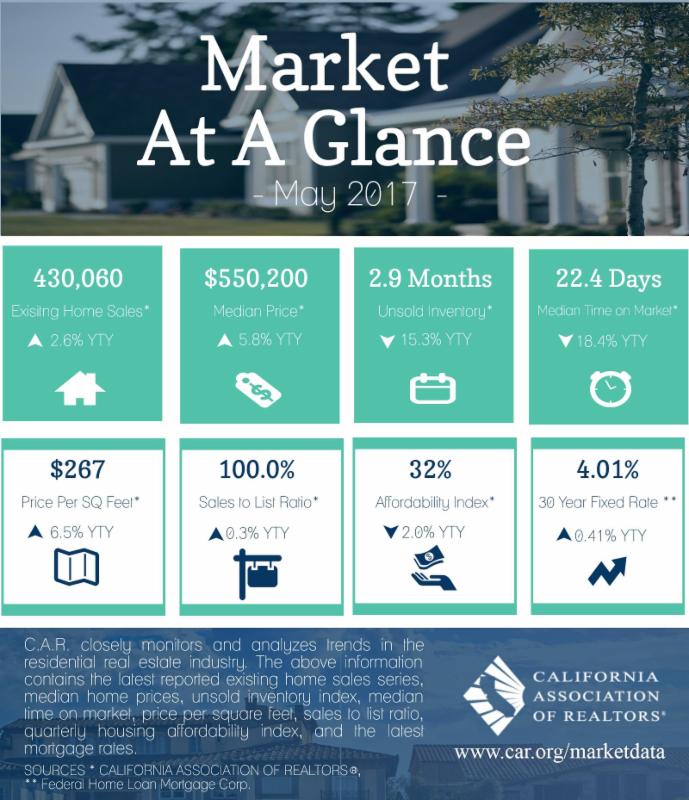Piedmont Update--2Q17--
As mentioned last quarter, we've seen a flattening of the real estate market in San Francisco, and see that now in the East Bay as well. In the second quarter of 2017, Piedmont saw 48 homes sold, for a typical $2.075 million (median $2.033m; average $2.13m) in an average 14 days on market, for about 15% over the asking price. Sales typically saw three or four offers, though one 3 BR/1 BA home on Harvard offered at $1.15m sold for $1.7m, with 21 offers! As I've said before, prices for very attractive three-bedroom and 1 or 2-bath homes in under about 1700 sf in Piedmont, Berkeley and Oakland are now at about parity--new for our markets.
A year ago, also during the 2nd quarter, 36 homes sold for a typical $2.2 million (med $2.151m; av $2.255m). We saw lots of wobbles in the past year so don't get too hung up on that higher number. Then, the typical home sold in 12 days with three offers, and was 16% over asking.
More recently, last quarter (1Q17), 15 homes sold at a typical $2.15 million (med $1.975m, av $2.319m). Twelve days, 7 offers, 16% over asking.
So quite a bit of noise in there, but generally, continued strength in the market based on things like price, number of offers, length of time on the market, and so on. There are still way more buyers for a well-prepared home than there are sellers.
Looking at neighboring Oakland (94610, 11, 18), the market remains robust and up about 10% compared to a year ago. The typical single-family home in nearby Oakland sold for about $1.35 million this last quarter (compared to$1.35m in 1Q17 and $1.22m in 2Q16). Throughout, homes sold in about two weeks (they might have sold more quickly, but agents typically advise holding offers at bay until potential buyers have had two weeks to find the house, often through word-of-mouth, and visit). Again, we see a flattening of the market in the more recent time period. But no fall-off in buyer demand, and believe me, I've been looking for those signs on behalf of my buyer clients!
Most recently, I was looking at the over $2 million market in Berkeley. There has been some buzz about a quieter market, and there have been fewer very high-end homes sold more recently, but that's perhaps because the backlog of higher-end homes and long-held estates held off market during the downturn has come through the pipeline in the past year. But prices, time on market, price per square foot and sales prices have all held up in the past year, and three months.
Looking more broadly at Berkeley, prices there are up about 6% year-over-year, from a typical $1.2 million in 1Q16 (med $1.165m; av $1.263m) up to $1.275 million this past quarter (med $1.251m; av $1.307m). Homes there sold in an average 14 days, with 5-6 offers, and about 21% over asking this past quarter. The number of homes sold is down just a tad this big selling season compared to last, but price increases in that market are strongest in the region this year compared to last.
Click here to see a nice graphic from the Ca Assoc of Realtors regarding trends across Alameda County (prices up 4.1% y-o-y), see below for the statewide market at a glance from CAR (prices up 2.6% y-o-y), and click here for CAR's chief economist Leslie Appleton-Young's recent very detailed economic and housing market presentation to the Oakland-Berkeley Assoc of Realtors. A few juicy tidbits:
--the number of sales in the SF Bay Area is down 21% y-o-y (compared to down 13% in SoCal and down 11% in the Central Valley);
--the housing turnover rate (the frequency with which we move) is very low, in historic terms, at once every 10 years. This appears to be because of the boomer generation demographic bubble, low interest rates, the capital gains tax impact at sale, Prop 13/low property taxes, and the lack of inventory to move to;
--we are getting behinder and behinder (that's my attempt to introduce calculus into the discussion) in the ratio of needed new housing units based on demographics, to available or newly constructed housing units. We are missing about 80,000 needed housing units each year right now. (And this overarching shortage of supply leads to both long term upward price pressure and decreased affordability);
--the only areas of the state that have seen price increases back above the level of 2006 are in the immediate Bay Area. All of SoCal, the Central Valley, and the further flung counties in the Bay Area (e.g. Solano, Napa) are still "underwater" relative to their previous highs.
There is lots more there of interest----






No comments:
Post a Comment